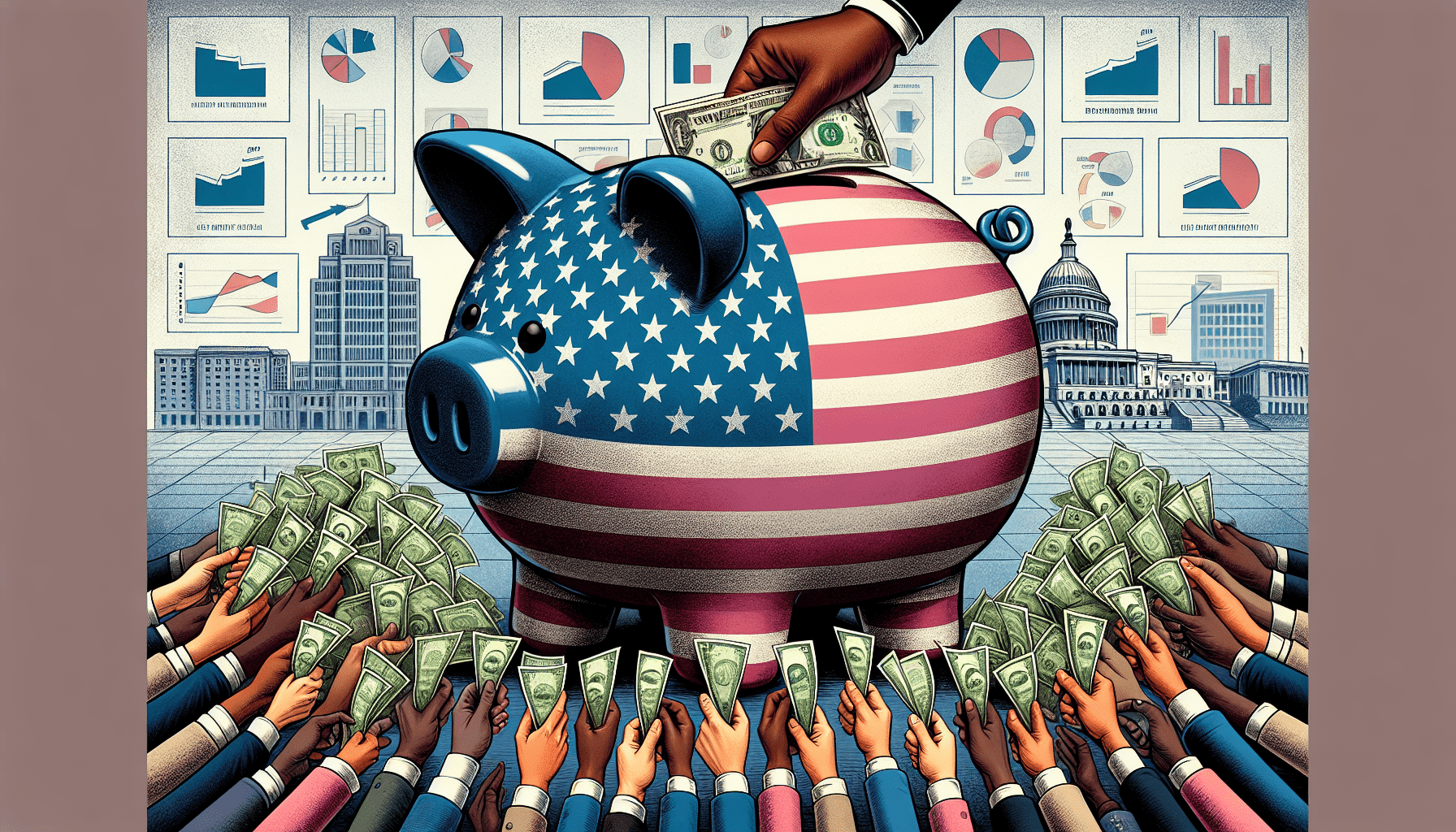Have you ever wondered if the US government can borrow money from its citizens? This question might seem straightforward, but like many financial topics, it’s filled with complexities and nuances. Let’s take a closer look at this intriguing concept, detailing how it works, the mechanisms involved, and why it matters.
Understanding Government Borrowing
When discussing government borrowing, it’s essential to understand who does the borrowing and the methods they use. The US government, like any other, needs to finance various activities and projects, from infrastructure to social programs. Borrowing is one way they secure the necessary funds.
What is Government Borrowing?
Government borrowing refers to the methods and practices through which the federal government raises money to fund its operations. Instead of relying solely on tax revenues or cutting expenditures, the government can issue debt to cover shortfalls.
Why Does the Government Borrow?
The US government borrows to cover budget deficits. When expenditures exceed revenues, borrowing bridges the gap, ensuring continuous funding for essential services and obligations. This borrowing is critical for maintaining economic stability, funding public sector projects, and addressing emergencies.
Mechanisms of Borrowing
The mechanics of borrowing are intricate. The government has established systems and instruments to facilitate this process. Let’s delve into the specifics of these mechanisms.
Treasury Securities
One primary mechanism through which the US government borrows from its citizens is through the issuance of Treasury securities. These securities include Treasury bills, notes, and bonds, which are essentially IOUs from the government to individuals or entities lending money.
| Type of Security | Duration | Key Features |
|---|---|---|
| Treasury Bills | 1 year or less | Short-term, sold at a discount |
| Treasury Notes | 2 to 10 years | Medium-term, pays interest every six months |
| Treasury Bonds | 20 to 30 years | Long-term, pays interest every six months |
Savings Bonds
Apart from Treasury securities, the government also issues savings bonds. These are designed for individual investors and serve as a more accessible option for the average citizen to lend money to the government.
Features of Savings Bonds
Savings bonds come in two main types: Series EE and Series I. Series EE bonds earn a fixed interest rate, while Series I bonds combine a fixed rate with an inflation rate, offering protection against inflation. Both types are considered safe investments with low risk, backed by the full faith and credit of the US government.
Federal Reserve and Government Borrowing
The Federal Reserve plays a critical role in the government borrowing process. While the Fed doesn’t lend money directly to the government, it influences interest rates and the overall economic environment, impacting the costs and availability of borrowing.

How Citizens Contribute
Citizens contribute to government borrowing primarily through the purchase of government securities and bonds. This allows individuals to indirectly support federal endeavors while also earning a return on their investment.
Buying Treasury Securities
When you buy Treasury securities, you’re lending money to the government. These securities are auctioned regularly, and you can purchase them directly from the Treasury or through a broker. This process is straightforward and accessible to most citizens.
Steps to Buy
- Open an Account: Use the TreasuryDirect website to open an online account.
- Participate in Auctions: Treasury securities are sold at auction. You can place a bid and, if successful, purchase securities directly.
- Secondary Market: Alternatively, buy through financial institutions or brokers in the secondary market.
Investing in Savings Bonds
Purchasing savings bonds is equally easy. These are typically acquired via the TreasuryDirect platform or through payroll savings plans offered by employers. They serve as a practical way for everyday citizens to contribute to government borrowing.
Benefits to Citizens
Borrowing from its citizens isn’t just advantageous for the government; it also presents numerous benefits for the individual investor.
Safe Investment
Government securities are considered one of the safest investments available. Since they’re backed by the US government, the likelihood of default is extremely low, providing peace of mind for investors.
Regular Income
Treasury notes and bonds provide a steady stream of income through biannual interest payments. This makes them a popular choice for those looking to supplement their income.
Tax Advantages
Interest earned from many government securities is exempt from state and local taxes. This can make them a more attractive option compared to other taxable investments, providing significant tax savings.
Economic and Societal Implications
The practice of the government borrowing from its citizens carries broader ramifications for the economy and society at large. It’s important to consider these impacts to fully grasp the significance of such borrowing.
Impact on National Debt
When the government borrows, it adds to the national debt. While manageable debt levels can be beneficial by providing vital funding, excessive debt accumulation can lead to concerns about fiscal responsibility and long-term economic health.
Stimulating Economy
Government borrowing can stimulate the economy, especially during downturns. By injecting capital into various projects and social programs, the government can help create jobs and stimulate consumer spending, contributing to economic growth.
Financial Literacy
Engaging in purchasing government bonds and securities can enhance financial literacy among citizens. This promotes a more informed public that is aware of national fiscal practices and personal investment opportunities.
Risks and Considerations
Although lending to the government is generally low-risk, it’s crucial to understand potential risks and considerations that come with this investment type.
Inflation Risk
One of the primary risks associated with government securities is inflation. Fixed-rate securities may not keep pace with inflation, potentially eroding purchasing power over time. Series I savings bonds help mitigate this risk with their inflation-adjusted rates.
Interest Rate Fluctuations
Market interest rates can affect the value of existing bonds. Rising rates can lead to falling bond prices. While this doesn’t affect those holding bonds to maturity, it can impact those looking to sell bonds before they mature.
Opportunity Cost
Investing in government securities may also mean missing out on potentially higher returns from other investments. It’s important to balance the safety and lower returns of government securities against the risk and higher potential rewards of other investment avenues.

The Historical Context
To gain a complete understanding of the government borrowing from citizens, it helps to consider the historical context. The practice has evolved over the centuries, shaped by various economic events and policies.
Early Days
The roots of government borrowing from citizens date back to the Revolutionary War when the fledgling US government issued bonds to finance the conflict. This set a precedent for using bonds as a crucial public financing tool.
World War II and War Bonds
Another significant era was during World War II, with the introduction of war bonds. These bonds were marketed to patriotic citizens to help fund the war effort, showcasing how borrowing from citizens could support national interests.
Modern Times
In contemporary times, government borrowing has become a routine part of fiscal policy, used to manage economic cycles, fund public projects, and address emergencies. The current mechanisms and policies reflect years of adaptation and refinement in response to changing economic climates.
Government Policies and Regulations
Several policies and governing bodies play a critical role in overseeing and regulating the process of government borrowing. These regulations ensure transparency, efficiency, and fairness in the lending process.
The Debt Ceiling
One critical aspect of government borrowing is the debt ceiling. This is a cap set by Congress on how much debt the federal government can incur. The debt ceiling is periodically reviewed and adjusted and serves as a measure to control and monitor government borrowing.
The Role of the Treasury Department
The U.S. Department of the Treasury is central to managing government debt. It is responsible for issuing securities, managing debt, and ensuring that the government meets its financial obligations. The Treasury works closely with the Federal Reserve and other financial institutions.
Regulatory Bodies
Entities like the Securities and Exchange Commission (SEC) and the Financial Industry Regulatory Authority (FINRA) help oversee the processes and practices involved in the trading and issuance of government securities, ensuring compliance with financial laws and protecting investors.

Making Informed Decisions
If you’re considering lending to the government through bonds or securities, making informed decisions is crucial. Understanding how these investments fit into your broader financial strategy can help you maximize their benefits.
Assessing Your Financial Goals
Before investing, consider your financial goals. Are you looking for a low-risk way to preserve capital, or do you seek steady income through interest payments? Understanding your objectives can help determine whether government securities are suitable for your portfolio.
Diversification
It’s generally wise to diversify your investments. While government securities are a safe option, balancing them with other investment types can distribute risk and potentially increase your overall returns.
Staying Informed
Keeping up-to-date with economic conditions, interest rates, and government policies can also influence your investment decisions. Informed investors are better positioned to adjust their strategies in response to changing conditions.
The Future of Government Borrowing
The practice of the US government borrowing from its citizens is likely to continue, but it will inevitably evolve. As economic conditions change and new financial products and technologies emerge, so too will the mechanisms and policies governing these transactions.
Technological Advancements
Advances in technology could reshape how citizens invest in government securities. Digital platforms and blockchain technology could provide more efficient and secure ways to manage these investments.
Policy Changes
Future policy changes could also impact government borrowing. Legislative actions concerning the debt ceiling, fiscal policies, or financial regulations could alter how and to what extent the government borrows from its citizens.
Global Economic Trends
Global economic trends, such as inflation, interest rates, and economic growth, will also play a crucial role in shaping the dynamics of government borrowing. Keeping an eye on these trends can provide insights into the future landscape of government borrowing.

Final Thoughts
So, can the US government borrow money from its citizens? The answer is a resounding yes. Through mechanisms like Treasury securities and savings bonds, the government can tap into the financial resources of its citizens, providing a mutually beneficial arrangement. For citizens, these investments offer a safe, reliable way to contribute to national funding while earning a return. On a broader scale, government borrowing supports economic stability, growth, and essential public projects.
By understanding how these processes work, the benefits and risks involved, and the historical context, you can make more informed decisions about participating in this aspect of the financial system. Whether you’re considering buying your first savings bond or looking at adding Treasury securities to your diversified portfolio, knowledge is your best asset.

